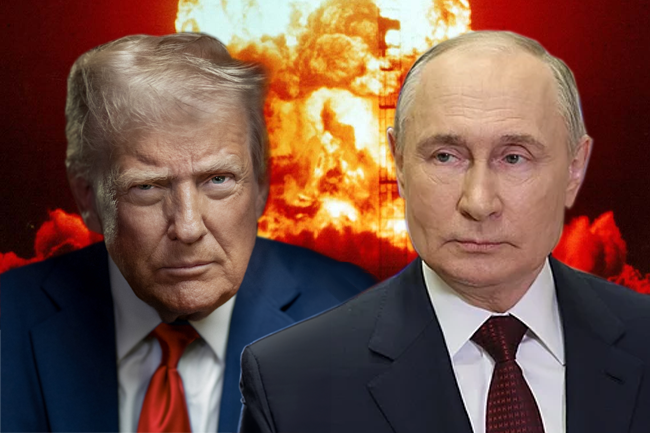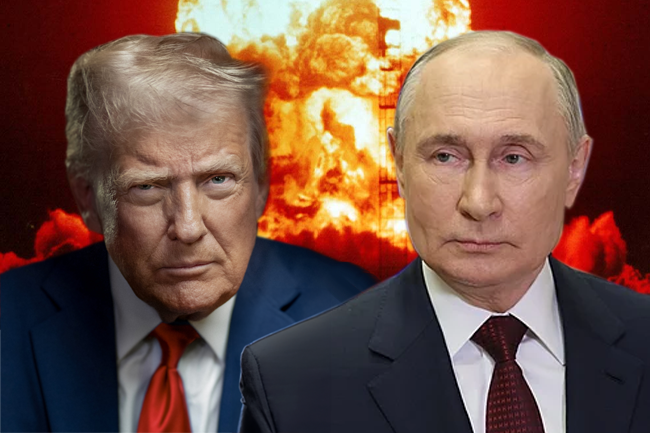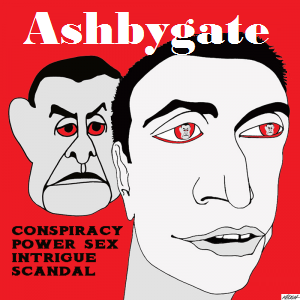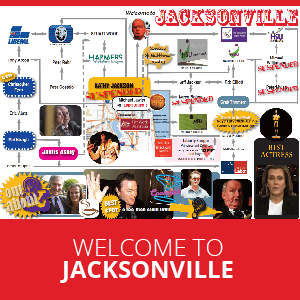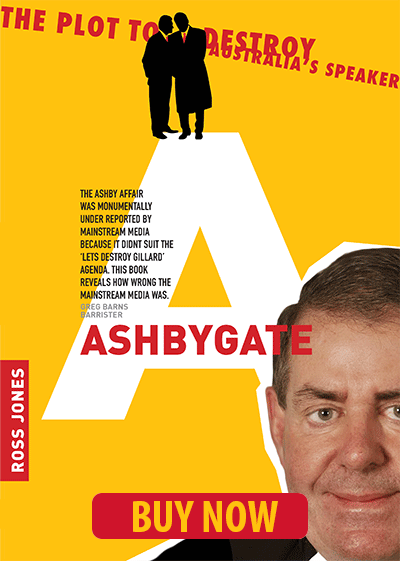Trump’s reckless nuclear testing threats risk reigniting an arms race and repeating the horrors witnessed by those scarred by past detonations, writes Dr Jeff McMullen.
I CANNOT UNSEE what I have seen. As Vladimir Putin and Donald Trump escalate their nuclear sabre-rattling, I wish they could have been with me long ago to meet “the boy with no eyes“.
After witnessing the human toll of nuclear weapon tests at the once secret Soviet citadel of Semipalatinsk in Kazakhstan (more on that later), I shudder to hear the American President claim that he is ordering a resumption of testing equal to that by the Russians and Chinese.
Trump wrote:
‘Because of other countries [sic] testing programs, I have instructed the Department of War to start testing our Nuclear Weapons on an equal basis.’
Trump’s out-of-nowhere threat, first posted on 30 October 2025, just before meeting China’s President Xi Jinping, has triggered global confusion, some high anxiety and a measure of scepticism among allies and adversaries.
One senior Russian official, Dmitry Medvedev, Deputy Chair of the Russian Security Council, scoffed at Trump’s shock announcement:
‘No one knows what Trump meant about “nuclear testing” (he probably doesn’t himself). But he's the president of the United States. And the consequences of such words are inescapable: Russia will be forced to assess the expediency of conducting full-fledged nuclear tests itself.’
A Chinese Foreign Ministry spokesman more tactfully reminded Trump of the three-decade-long moratorium on testing observed by the three superpowers.
“China hopes that the U.S. will earnestly abide by its obligations under the Comprehensive Nuclear-Test-Ban Treaty and its commitment to a moratorium on nuclear testing,” Guo Jiakun said at a briefing in Beijing.
A now-familiar pattern has exacerbated the bewilderment over Trump’s bombshell. The U.S. President and some of his most senior advisers so often operate on different pages.
Trying to calm fears of a surge in nuclear testing by the nine nations possessing these doomsday weapons, U.S. Energy Secretary Chris Wright attempted clarification. He suggested that the Americans would not be resuming explosive nuclear warhead testing. They would modernise their arsenal with so-called sub-critical testing of weapon parts and delivery systems.
Such tests stop short of a full chain reaction and the most crucial assessments are done with supercomputers simulating explosions.
Donald Trump has other ideas. When arms control experts derided the U.S. President as “misinformed and out of touch”, the self-described “very stable genius” was like a nuclear centrifuge spinning at 100,000 revolutions a minute.
“We have enough nuclear weapons to blow up the world 150 times,” Trump blustered on CBS’s Sixty Minutes, and then he doubled down on his claim that Russia and China were secretly conducting underground tests.
Said Trump:
“Russia's testing and China's testing, but they don't talk about it... You don't necessarily know where they're testing. They... they test way under underground where people don't know exactly what's happening with the test. You feel a little bit of a vibration. They test and we don't test. We have to test!”
This is the risk in Trump’s use or abuse of his extraordinary presidential power. His statecraft is a highly performative act, self-centred and highly successful in capturing the worldwide attention he craves. The geopolitical outcomes are less certain.
What is most remarkable about his outbursts on resuming nuclear testing is that earlier this year, Trump insisted that he wanted to resume nuclear arms talks with Russia and China.
Given his idiosyncratic negotiating style, the unsuccessful former casino owner may be playing poker.
The ‘world’s best dealmaker’ (according to his State Department) is still pursuing negotiations with Russia and China to cap the stockpiles of nuclear weapons before New START, the bilateral 2010 treaty with the Russians, expires in February 2026.
There are many obstacles, especially as the bromance between Putin and Trump appears to have drifted into a new, strained relationship.
With no peace deal to end Russia’s invasion of Ukraine; the imposition of further U.S. sanctions on the two largest oil companies that fund the Russian war machine, repeated threats by Putin to resort to the use of tactical nuclear weapons and Trump’s counter that he can always send Ukraine long range Tomahawk missiles, there is a new tension between the two nations that hold about 90 per cent of the world’s estimated 12,241 nuclear warheads.
This strain was evident at the Kremlin when Putin assembled the Russian Security Council. With television cameras rolling, he glumly instructed his generals to prepare contingency plans for renewed nuclear testing.
Russia’s Defence Minister, Andrei Belousov, indicated that if the U.S. moves towards an explosive nuclear test, a task that could take many months or even several years, the Russians were ready to resume nuclear testing at Novaya Zemlya, an Arctic test site.
I have seen the catastrophic aftermath of nuclear testing around the world. As an ABC foreign correspondent, I filmed American nuclear bomb plants and their dumping grounds for high-level nuclear waste, a store of poison that would remain lethal for some 250,000 years.
In 1984, reporting for the ABC’s Four Corners, I was the only journalist to travel to the Soviet Union with an American group from International Physicians for the Prevention of Nuclear War. It was a daring attempt by medical scientists to bridge the chasm of the Cold War.
After meeting their Russian counterparts, including Dr Yevgeny Chazov, personal physician to most of the ageing Soviet leaders, the American doctors learned about the terrible scale of radiation illness surrounding the top-secret military citadel in Kazakhstan, where most of the Soviet tests were conducted. I was barred from going there until the Soviet Union collapsed.
In 1993, doctors in Kazakhstan helped my Sixty Minutes film crew reach Semipalatinsk, the nuclear test range on a treeless plain with a few barren hills. We wore masks and white protective suits, but our testing equipment indicated we were witnessing dangerous radiation levels more than 1,000 times the safe level of exposure.
A Russian specialist at the Radiation Institute at Semipalatinsk confirmed that vast plumes of radiation from 116 above-ground bomb tests had contaminated three nearby villages we visited and several large cities. Up to 1.5 million people may have been irradiated with an estimated 250,000 displaying increased cancer of the breast, colon, oesophagus, liver, lung and thyroid.
I cannot forget this human catastrophe we witnessed. In a locked military laboratory, we saw glass cabinets and wooden shelves lined with bottles preserving the legacy of 40 years of nuclear testing.
‘Floating like dolls in a clear liquid, hideously deformed foetuses and stillborn infants screamed silently of the chromosome damage caused by radiation. Staring at us from a large jar was the single eye of a Cyclops child. In the centre of the room, almost dancing in the light, was a mermaid baby, a child with no legs but a fish-like tail. The chamber held more jars than I could count.’
(From A Life of Extremes, Journeys and Encounters, Jeff McMullen)
The Red Army had built its version of human civilisation at Semipalatinsk with concrete buildings, steel bridges, a locomotive engine and carriages, plus old aircraft, tanks and military trucks, all to be blown to smithereens. The local Kazakhs were the human guinea pigs.
The Semipalatinsk Radiation Institute has a model of the test site near the village of Kurchatov. It was here that the Kazakh doctors wanted me to meet Berik Syzdykov, aged 13, the “boy with no eyes”.
Many of the Kazakh villagers told us they had been made to stand outside their small houses to watch the explosions and the huge mushroom clouds nearby. Others showed us the cracked mud brick walls and pointed to the irradiated paddocks where their animals grazed.
Berik’s mother, Zina Syzdykov, told me that she was pregnant with the baby boy when the ground trembled terribly under their feet. I softly shook Berik’s outstretched hand. I could see that massive tumours encrusted his entire head and face.
“The bomb did this to my child,” Mrs Syzdykov told me. “He will never see.”
We need to be awake to the dangers of the new nuclear arms race. The Physicians against Nuclear War were awarded the Nobel Peace Prize for their effort to warn the world of the catastrophic outcomes from using nuclear weapons in war or peacetime. If Donald Trump still covets this prize, he must never allow another nuclear test.
Dr Jeff McMullen AM is a journalist, author and filmmaker known for his reporting and advocacy for 60 years. McMullen has been a foreign correspondent for Australian Broadcasting Corporation, reporter for Four Corners and Sixty Minutes, anchor of the 33-part issue series on ABC Television, Difference of Opinion and director of independent documentaries. He was awarded the United Nations Media Peace Prize for his trilogy of hour-long documentaries about conflicts in Central America.
 This work is licensed under a Creative Commons Attribution-NonCommercial-NoDerivs 3.0 Australia License
This work is licensed under a Creative Commons Attribution-NonCommercial-NoDerivs 3.0 Australia License
Support independent journalism Subscribe to IA.

Related Articles
- Congressional Budget Office estimates of deportations will make Trump angry
- Australia thrives while USA struggles in challenging economic times
- From the Acropolis to Mar-a-Lago: Trump and the ghost of Alcibiades
- Republican White supremacy exposed through Trump’s agenda
- God's heavy hitters smack down Trump, ‘the lying, criminal predator’


